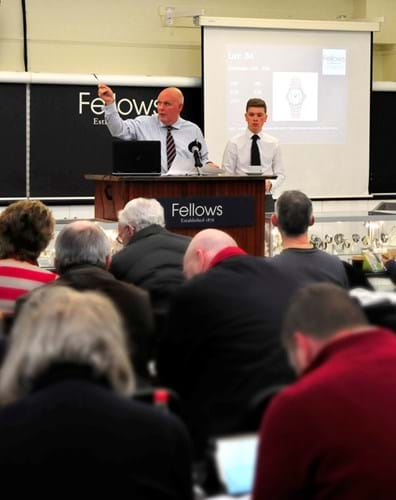A guide to auction terms
As a bidder, there are a few words and terms that are worth understanding so that you can get the most out of buying at auction.What does the term ‘max bid’ mean? It’s a service available on thesaleroom.com where you set a ceiling for the price you are willing to pay and leave your bid before the auction starts.
Here is our selection of the ones you need to know:
Buyer’s premium - A charge made by the auctioneer to the buyer. It is charged as a percentage of the hammer price. This fee is usually subject to VAT. When you buy an item at auction the invoice you receive from the auction house will include this charge. Learn more: how do auction charges work?
Catalogue – a listing of lots being offered for sale at an auction.
Catalogue description – each lot in an auction will be described in the catalogue, sometimes accompanied by photos. The description typically includes information such as the lot’s date or age, size, type, materials it is made from and so on.
Condition report – you can ask the auctioneer for a condition report on any lot you are interested in. This will provide details such as wear, damage and restoration, giving you as the potential buyer reassurance as to the current condition of the lot – useful if you can’t go and view the item in person.

What do we mean by a ‘live auction'? It’s an auction with an auctioneer on a rostrum in front of an audience of bidders. Nowadays most sales also offer bidding on the telephone and online on platforms such as thesaleroom.com. Image courtesy of Fellows.
Estimate – usually a range such as £80-£120, the estimate indicates what the auctioneer believes the lot might sell for. It can be based on prices recently paid at auction for comparable items, and will take into account condition, quality, rarity and provenance (where it came from and who owned it previously).
Hammer price – The hammer price is the value of the highest bid on an item in an auction. When there are no more bids, the auctioneer’s hammer (or gavel, as it is known) comes down and the final bid becomes the hammer price.
Live auction – An auction in which an auctioneer typically stands on a rostrum in front of an audience of bidders and conducts the auction by offering lots in the numerical order they were displayed in the catalogue. Bids will also be taken from telephone and online bidders. Bidders will know the time when the auction starts and should be ready to place their bids when the lots they are interested in come up. Learn more: how to bid in a live auction.
Lot – an item offered for sale in an auction.
Max bid – the max bid service on thesaleroom.com enables you to set a ceiling for the price you are willing to pay and leave your bid before the auction starts. Our technology does the bidding for you during the auction and keeps you in the lead until your maximum price has been reached and it never bids any further on your behalf.
Reserve – the price below which a lot will not be sold. Because it is confidential it is not published in an auctioneer’s catalogue, but it will never exceed the lower estimate.
Timed auction – In a timed auction that takes place online, there is no auctioneer taking bids from a live audience in a room. Instead, each lot can be bid on for a defined period of time. At the end of this period, the bidder who has submitted the highest bid wins the lot, provided the bid exceeds the reserve price. Timed auctions on thesaleroom.com typically last for a week or two. Learn more: how to bid in a timed auction.
Get bidding
Now you know the basics, you can bid with confidence. Good luck!
